After seeing the phenomenal and glorious Angkor Wat, which Cambodia is probably most famous for, I thought that we have seen it all. That was the granddaddy of temples, the most impressive structure in all of Siem Reap. Surely, we thought, the next temples we were going to see after Angkor Wat would look like an anthill!
Our tour guide Sam promised us that there, in fact, other temples that, despite being notably smaller and less popular than Angkor Wat, will still blow us away. Sam hasn’t failed us so far, and he knows his temples, so we went on excitedly to our next stop, which was Angkor Thom, which literally means “Great City.” Yes, it was not just a single temple but an actual city with several temples.
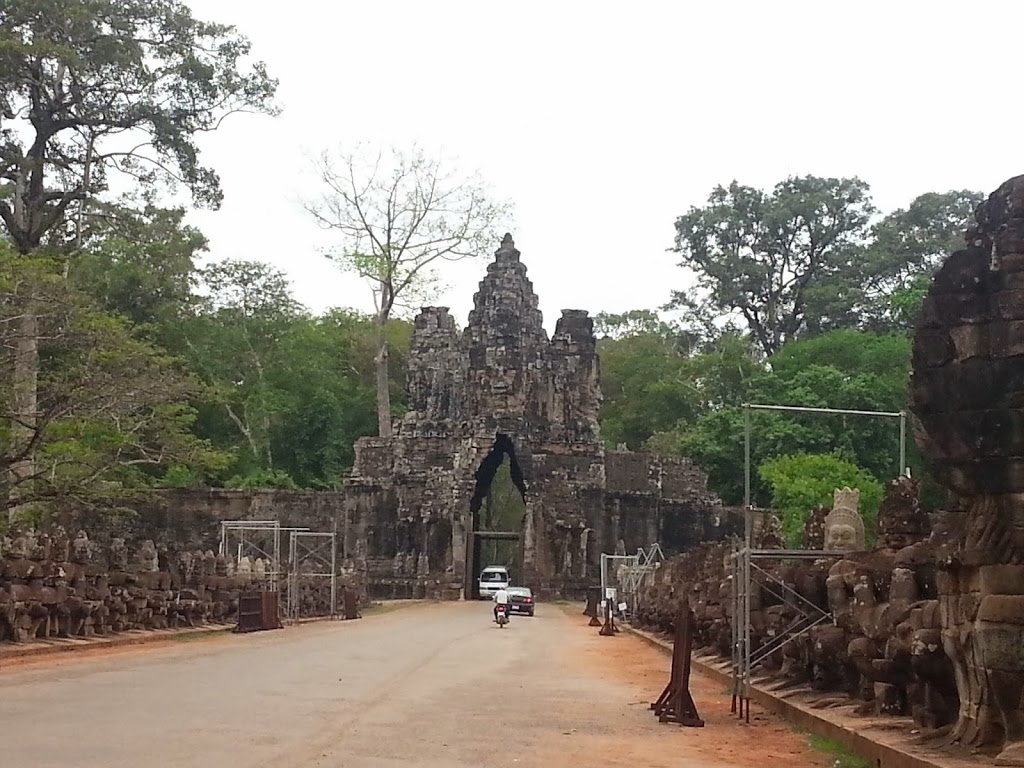
Earlier that day at Angkor Wat, we learned about the Hindu myth of The Churning of the Sea Milk, which is about the battle of gods and demons in an attempt to get the amrita, an elixir that would render them immortal. In order to do this, they used a giant naga (serpent) as their “rope” which was coiled around Mount Mandara. As the gods held the serpent’s tail and the demons held the head, they would pull alternately, and the oceans would churn and enable them to obtain the amrita.
Before reaching the gate of Angkor Thom, one has to pass by a long thoroughfare that extends over a moat. This is hedged by stone effigies of the characters from The Churning of the Sea Milk — 54 gods on the left and 54 demons on the right, each of them holding on to the naga. It was easy to tell the gods and demons apart — the gods looked a little friendlier, though their faces were tampered with, while the demons had a sour expression on their faces, their mouths contorted into a frown . Sad to say, some of the statues have been beheaded!
 |
| The gods and the goddesses. Pfft! |
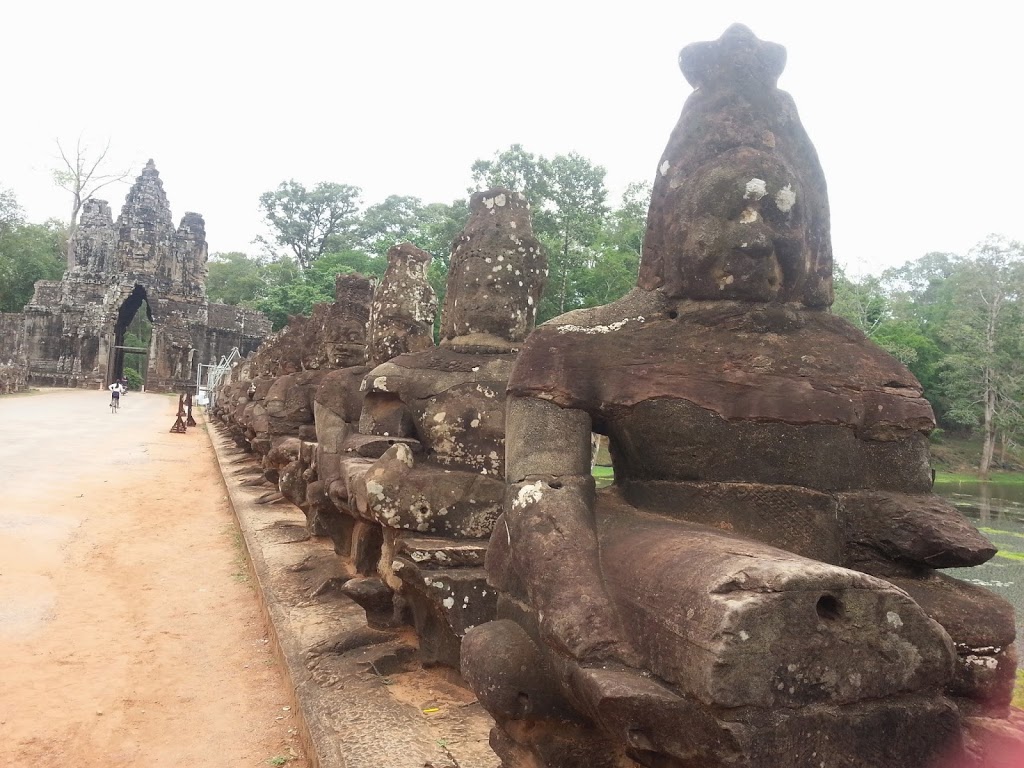
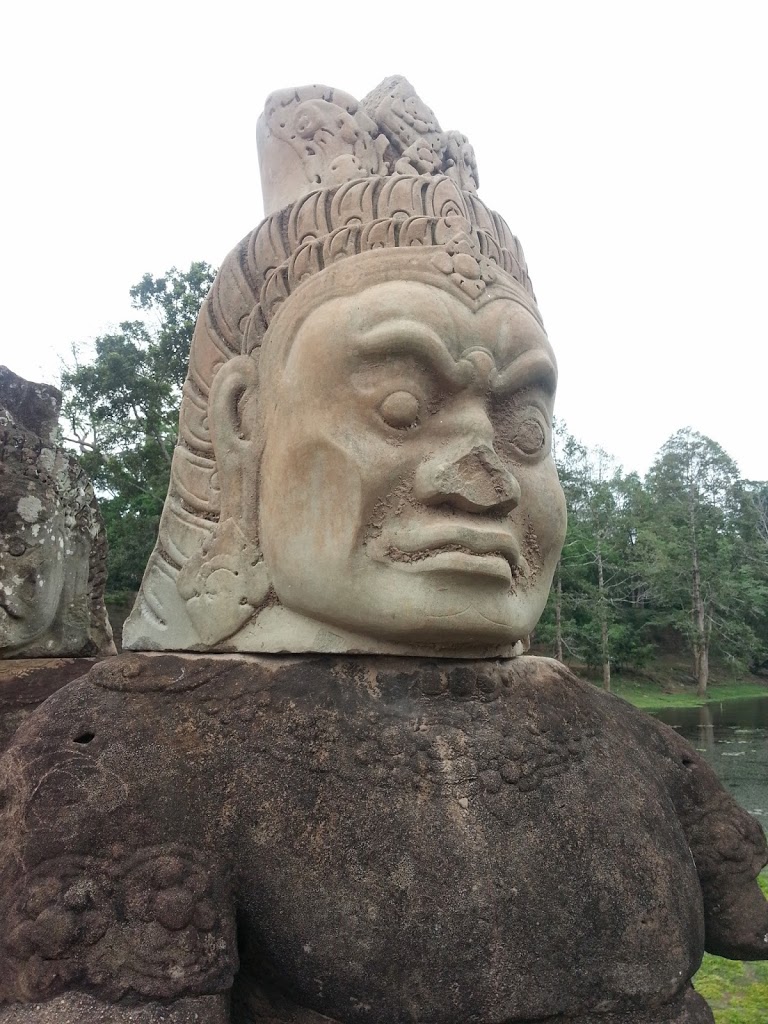 |
| This guy needs a nose job. |
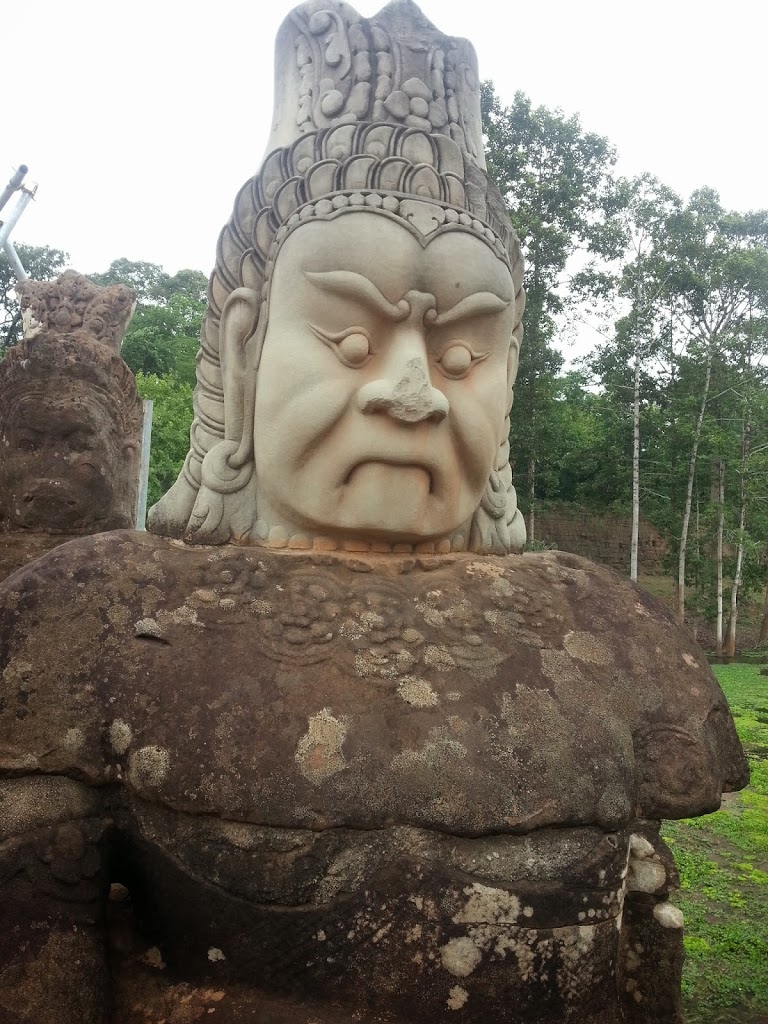 |
| Someone looks a bit pissed. I would be, too, if someone chopped my nose off! |
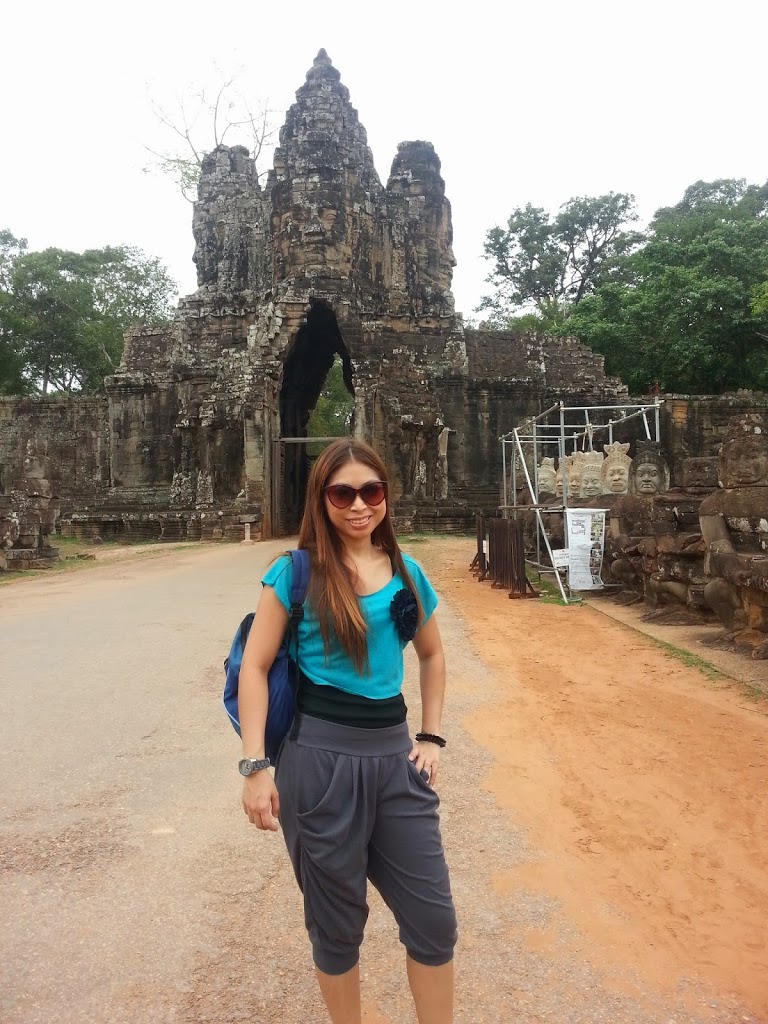 |
| Angkor Thom-boy. Not one of my most girly looks. |
 |
| Ten points if you spot the face! |
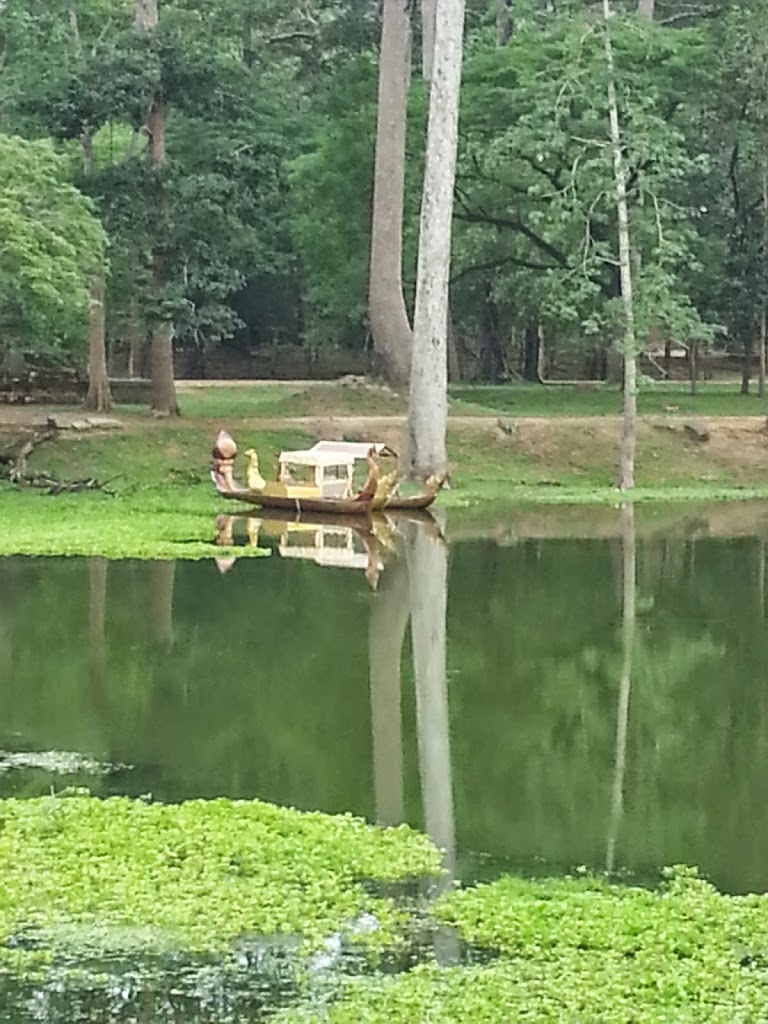 |
| This is the moat that surrounds the towers of Angkor Thom. That gondola on the opposite end is actually a wedding boat! |

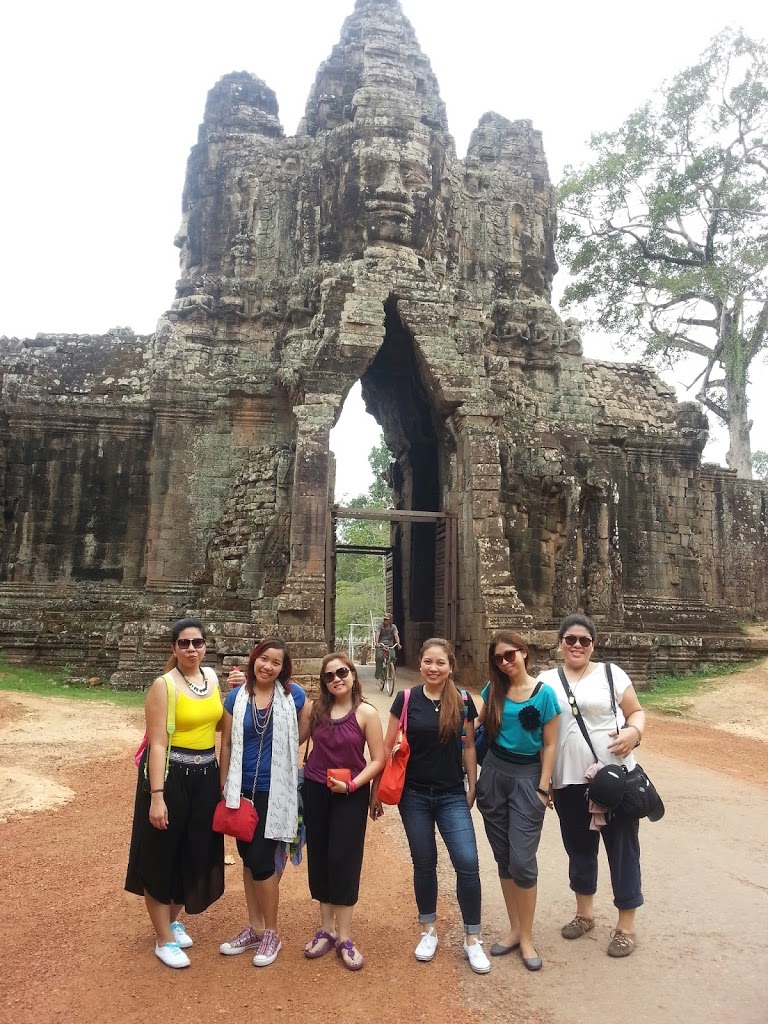 |
| On the other side of the gate |
We continued our journey and finally arrived at Preah Khan, which is located northeast of Angkor Thom. The name “Preah Khan” means “Royal Sword.” This temple was built for King Jayavarman VII.
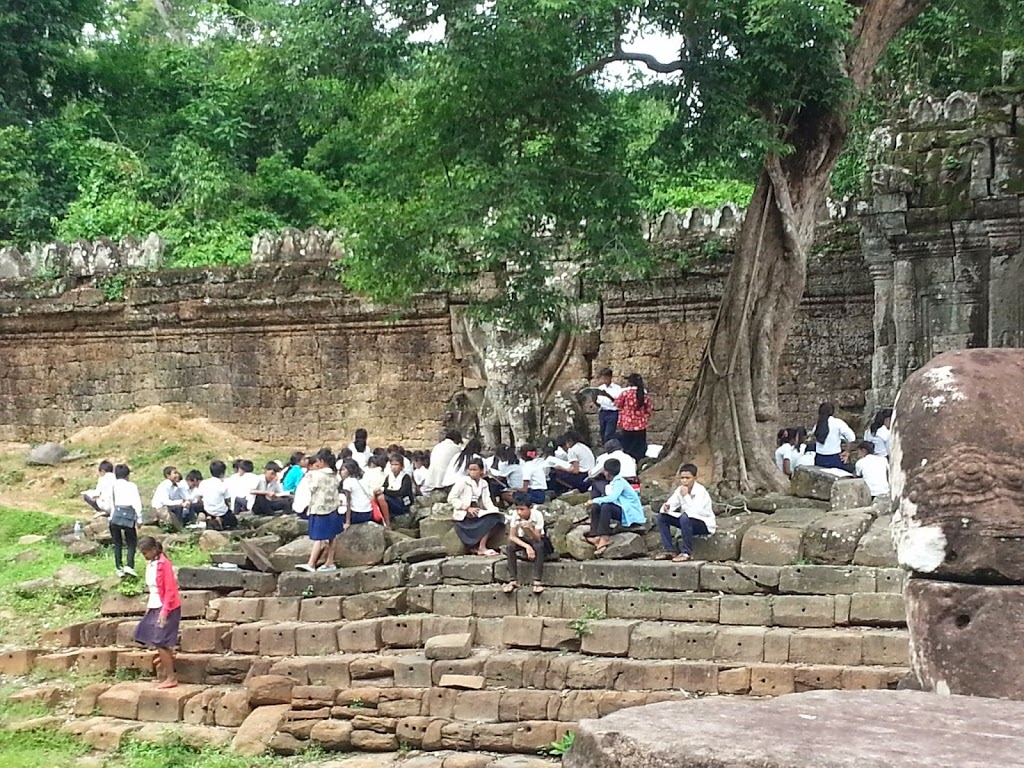 |
| Cambodian “classroom.” Students have their lessons in front of Preah Khan. |
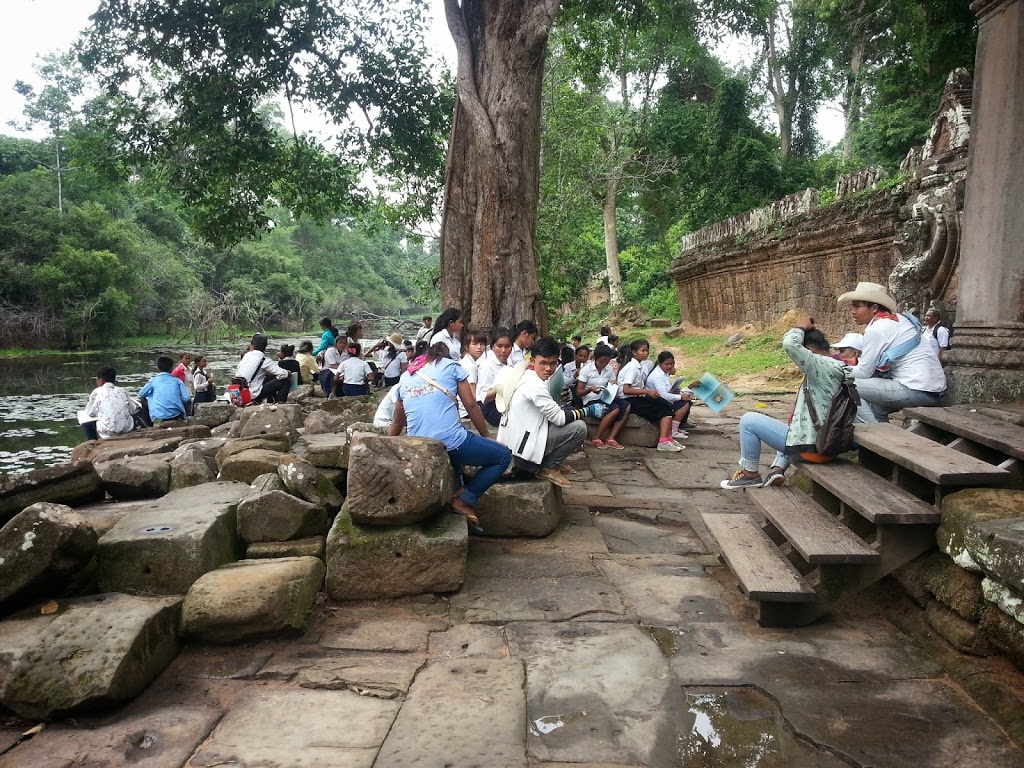

As we walked toward the temple, I noticed one amazing thing: silence.
Most temples we have been to were teeming with tourists or hawkers. Preah Khan was serene, almost empty. After wrestling with the crowds at Angkor Wat, I welcomed the peace and serenity that Preah Khan exuded. The noiselessness made everything look and feel more beautiful. It allowed us to take our time to admire the surroundings more.
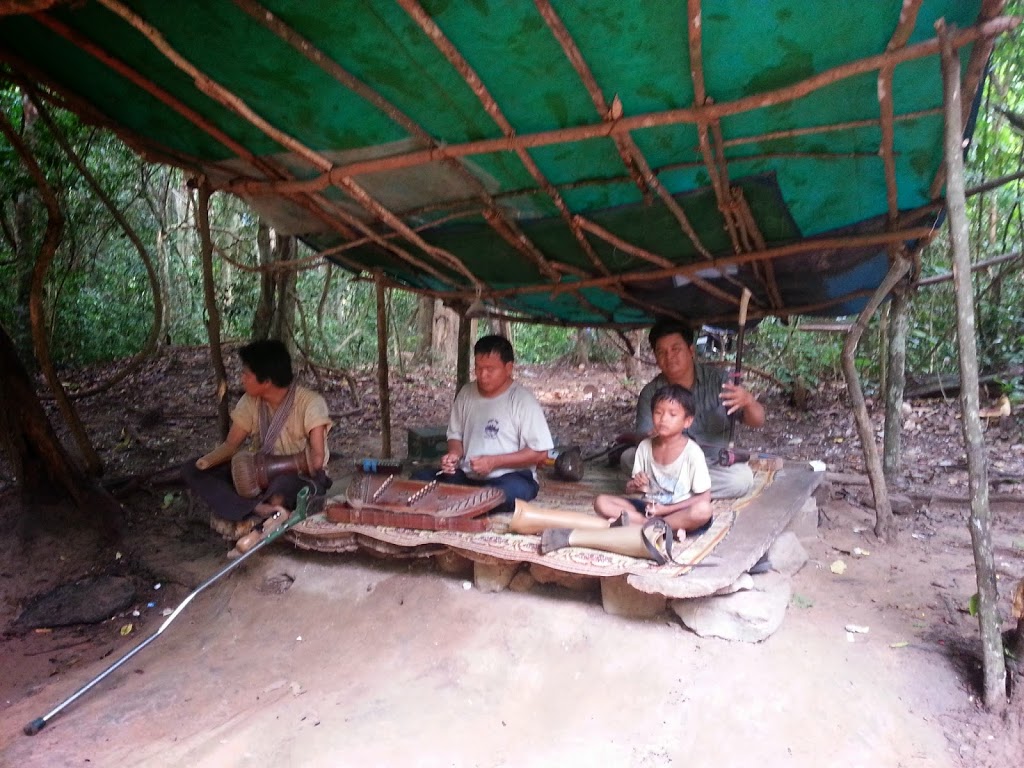
As we continued walking, the silence was broken by the sound of musical instruments. A group of people who were handicapped by the mine was playing music for those who visit Preah Khan.
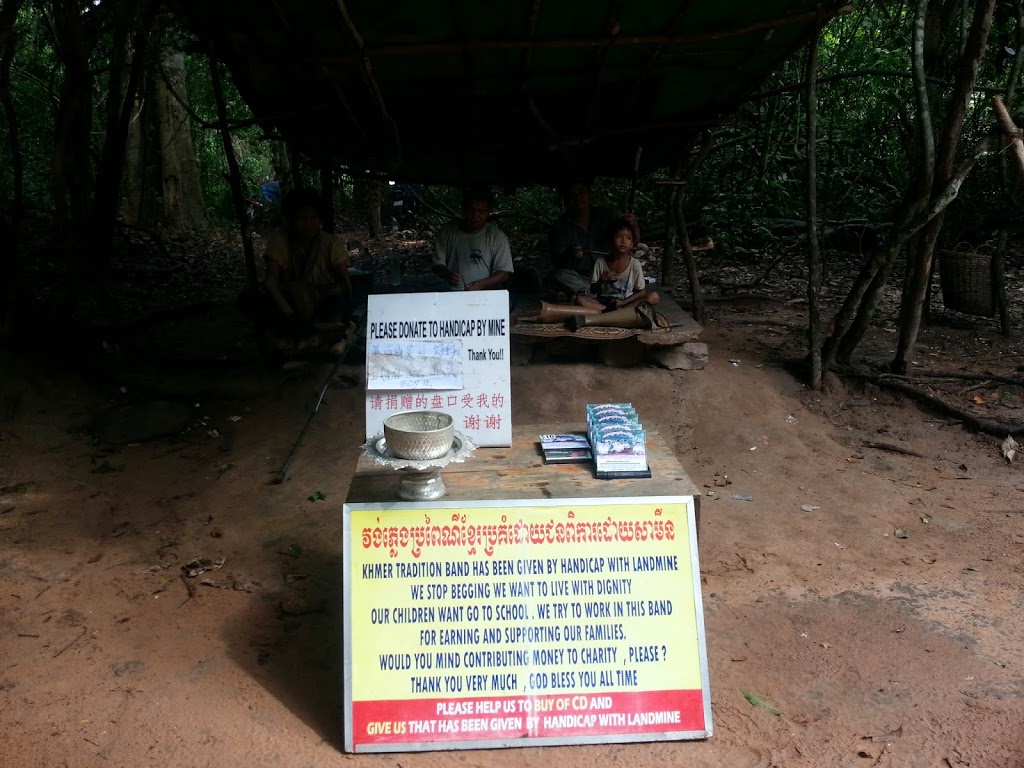 |
| Click on the image to enlarge it and read the words on the sign better. |
Being a musician, I have a really soft spot for people who use music as their avenue to support themselves financially, especially when they have no other means. I live in a country where poverty and is regnant, and many have resorted to mendicancy without making any effort to sustain themselves. What I admire about these musicians is that they make use of their talents to be able to provide for themselves. What is even more admirable about this Khmer band is that they do not let their impairments become stumbling blocks to living a life with dignity and purpose.
 |
| Looks like we’re the first tourists to arrive! That explains why Lyka is holding up one finger in this photo as if saying, “number one!” |

Preah Khan reminded me of another temple we visited the day before, Ta Prohm, which is the temple most known for as the setting of the movie Lara Croft: Tomb Raider. Both were enshrouded in nature, replete with tall and mind-boggling trees. Like Ta Prohm, the reconstruction work in Preah Khan was also left at a minimum so its loveliness is preserved in its purest and most natural state, ruins and all. Both temples were magnificent and charming at the same time. The only difference is that Preah Khan is more underrated and significantly quieter.

 |
| The spung trees with enormous roots spilling over the temple roofs are the highlight of Ta Prohm, and they are also present in Preah Khan. |
 |
| Preah Khan is alive with carvings of devatas (female deities and divinities) and apsaras (female supernatural beings) in random areas of the temple. |
With its quirky elements and sinuous paths, Preah Khan was like an explorer’s jungle gym. Curious travelers will be in for lots of pleasant surprises along the way as they traipse around the galleries and squeeze themselves in narrow and low passageways. One thing is for sure: Preah Khan is a fun temple!
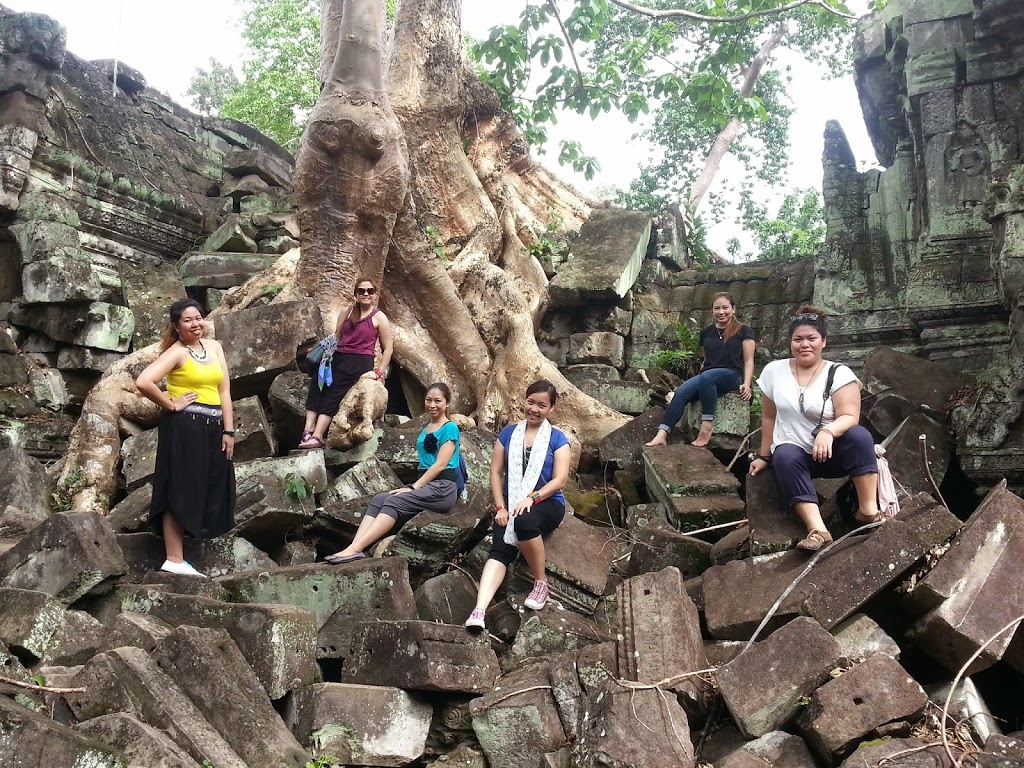 |
| Beauty in ruins |
 |
| Chin and Punky going through every nook and cranny. Chin looks so happy. Punky, meanwhile… |
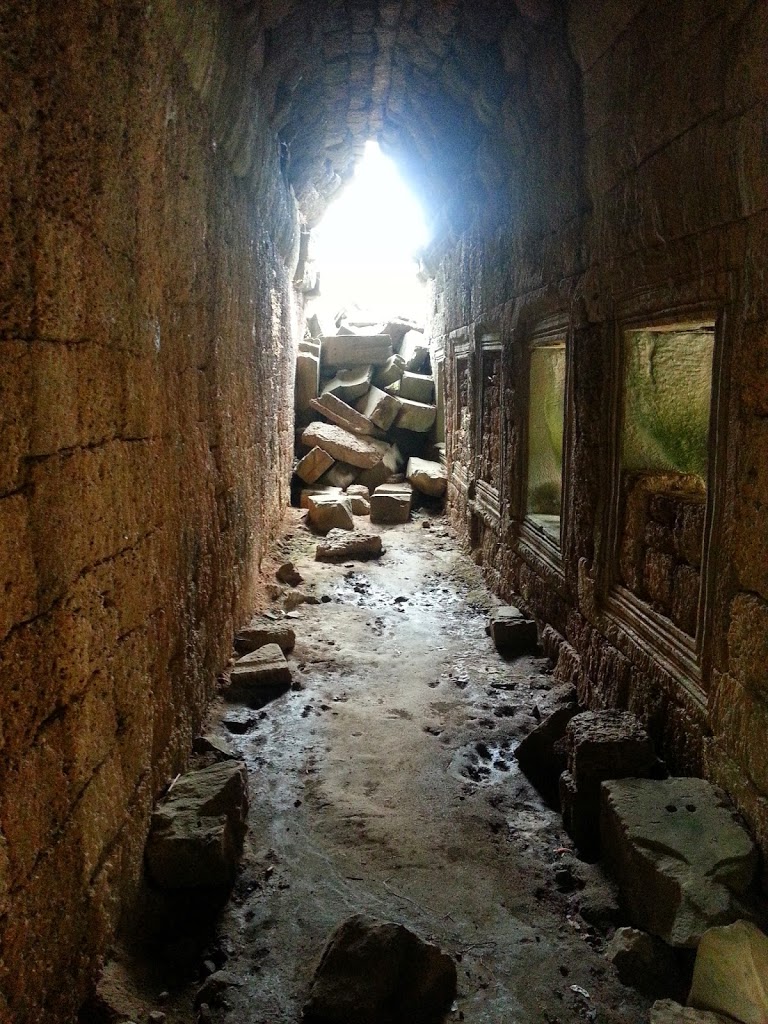 |
| Walking through this empty and dark corridor made us feel like a bunch of archaeologists and treasure hunters. |
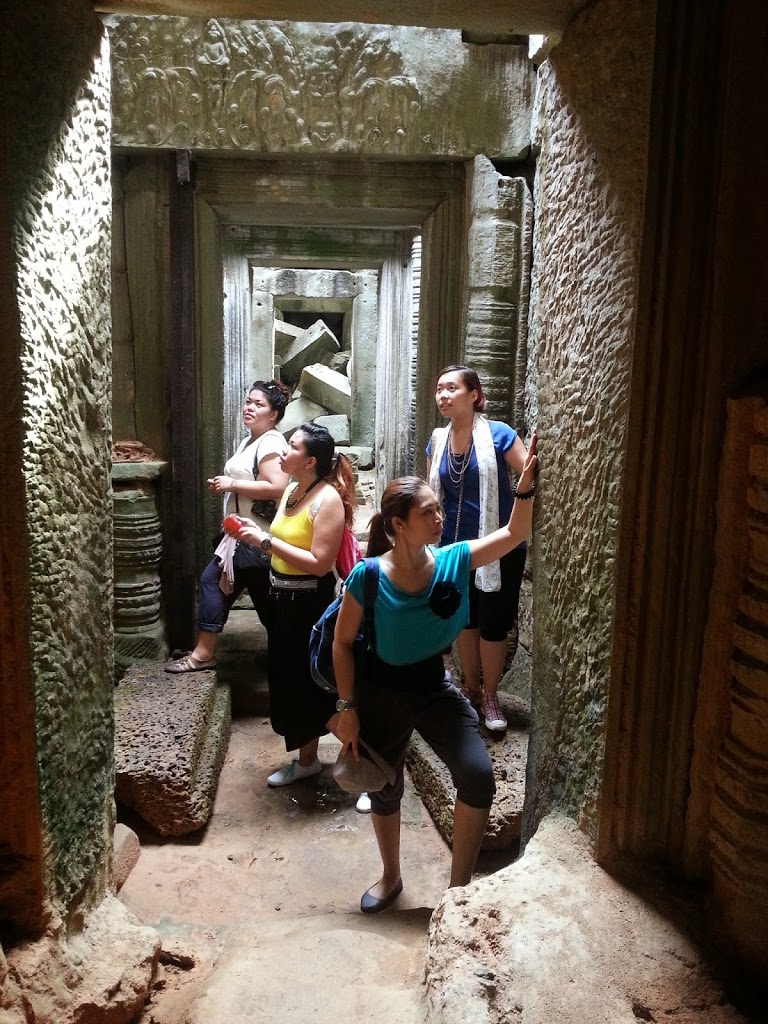 |
| “Look amazed! Act like you just unearthed something cool!” That wasn’t so hard. We met, after all, in our college theater organization, so acting and drama were hard-wired in our system. Besides, we really WERE amazed. This temple is really full of amazing things! |
We had to scrooch down a lot while passing through these corridors. The doors leading to the center of the temple where the
stupa was located were purposefully built to be small and low so that all who pass there would have to bow (or at least appear to bow) in reverence to the king.
As we made our way through the narrow chambers of Preah Khan, we stumbled upon two small shrines. Apparently, these are the shrines of the two wives of King Jayavarman VII. It is said that women who wish to have children pay a visit to these shrines, and their wishes are often granted.
|
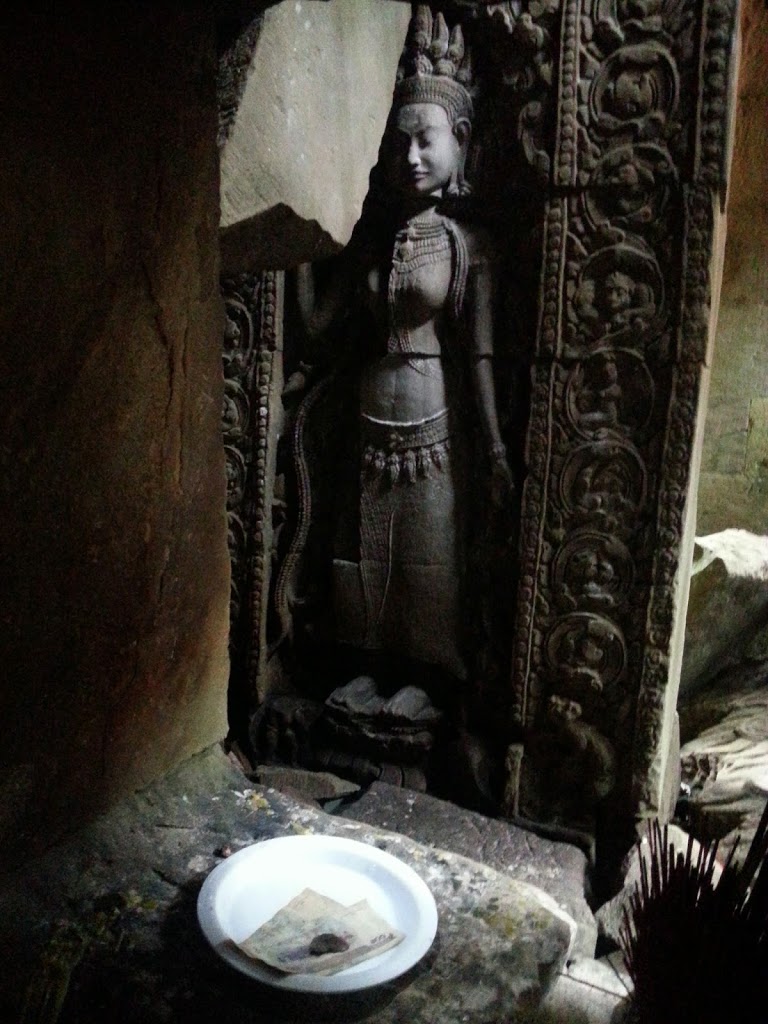
|
|
A shrine for Queen Jayaradevi, one of the wives of King Jayavarman VII, obscured in an underground area of Preah Khan
|
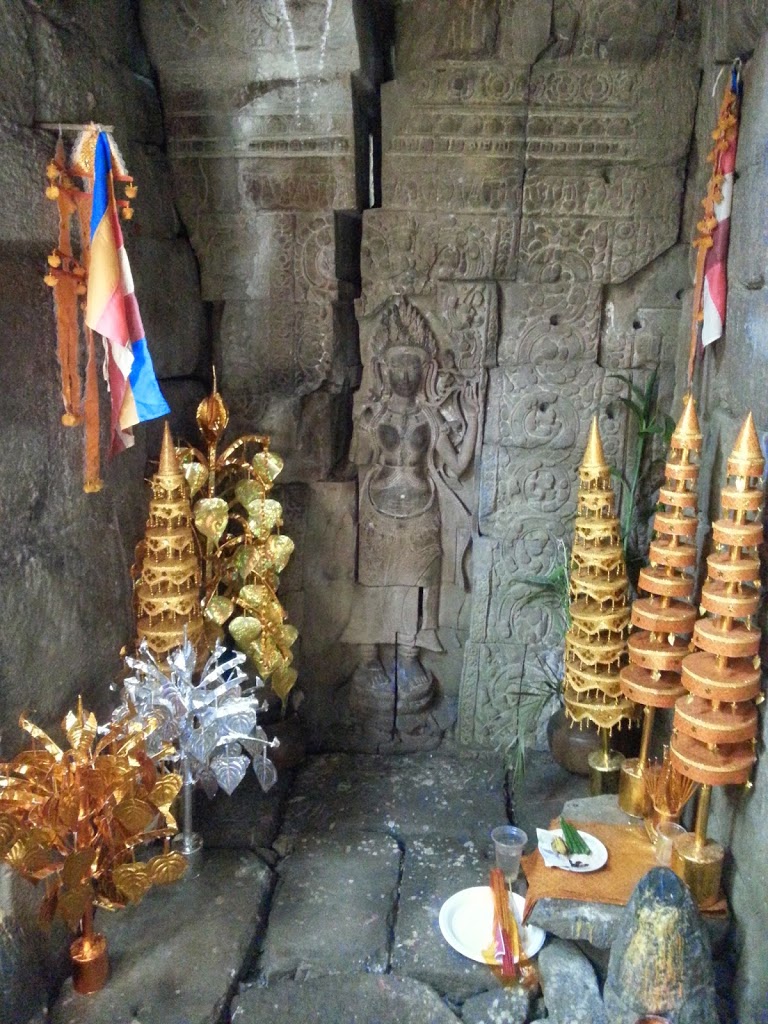 |
| An image of Queen Indradevi, another one of King Jayavarman VII’s wives, could be easily missed if not for the flashy offerings that will surely catch anyone’s eye. |
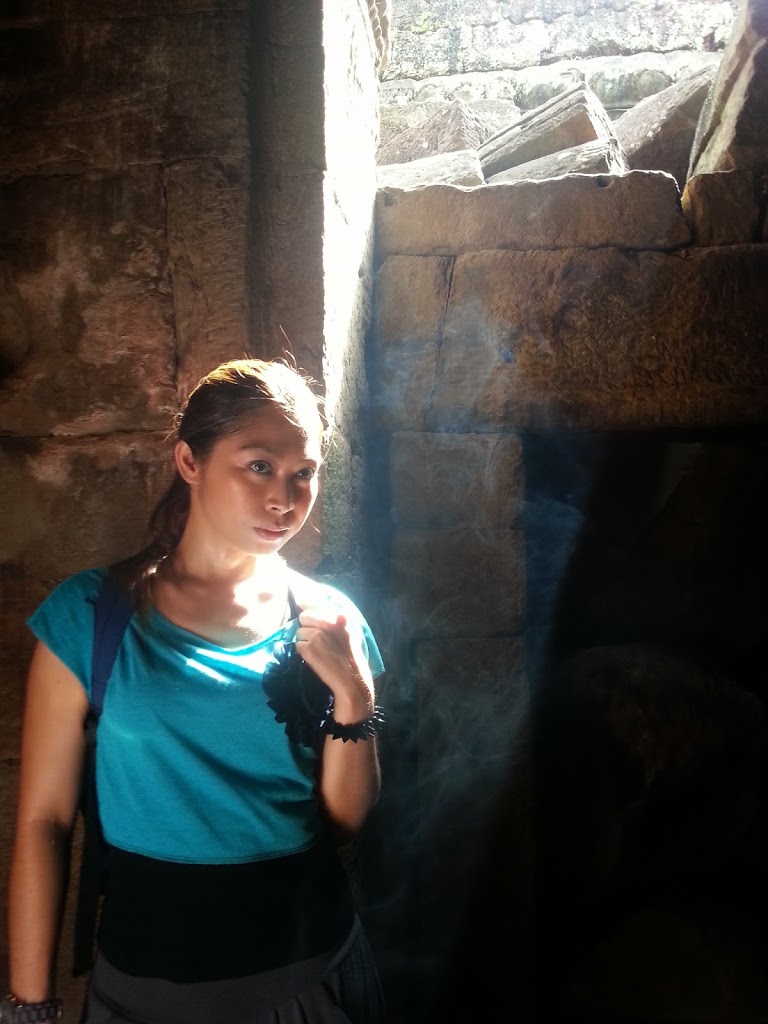 |
| Each of us had our turn to have this “bad ass” dramatic photo inside the cryptic chamber — complete with the smoke effect and the perspiration! But don’t be fooled… |
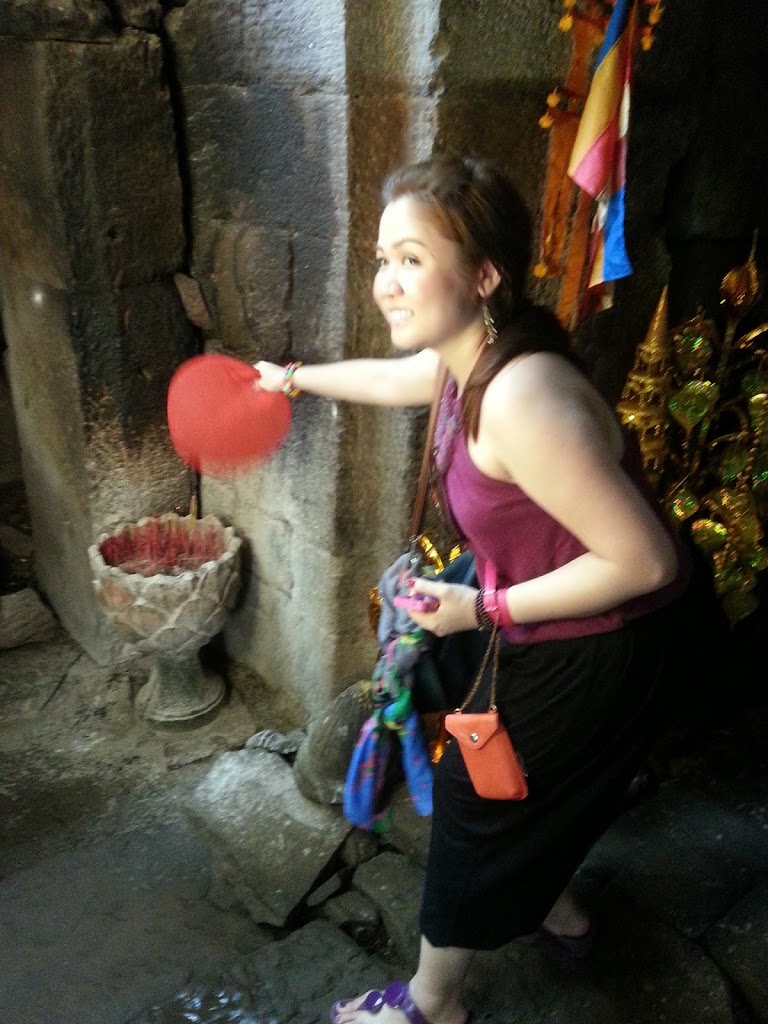 |
| …because the truth is, we used a “manual smoke machine.” Alessa had to fan the burning incense sticks to disperse the smoke. It was like shooting a low budget movie! |
 |
| A group of students learning about Preah Khan… IN Preah Khan! See? This is how learning should be like! It shouldn’t be confined in the four walls of a classroom! |
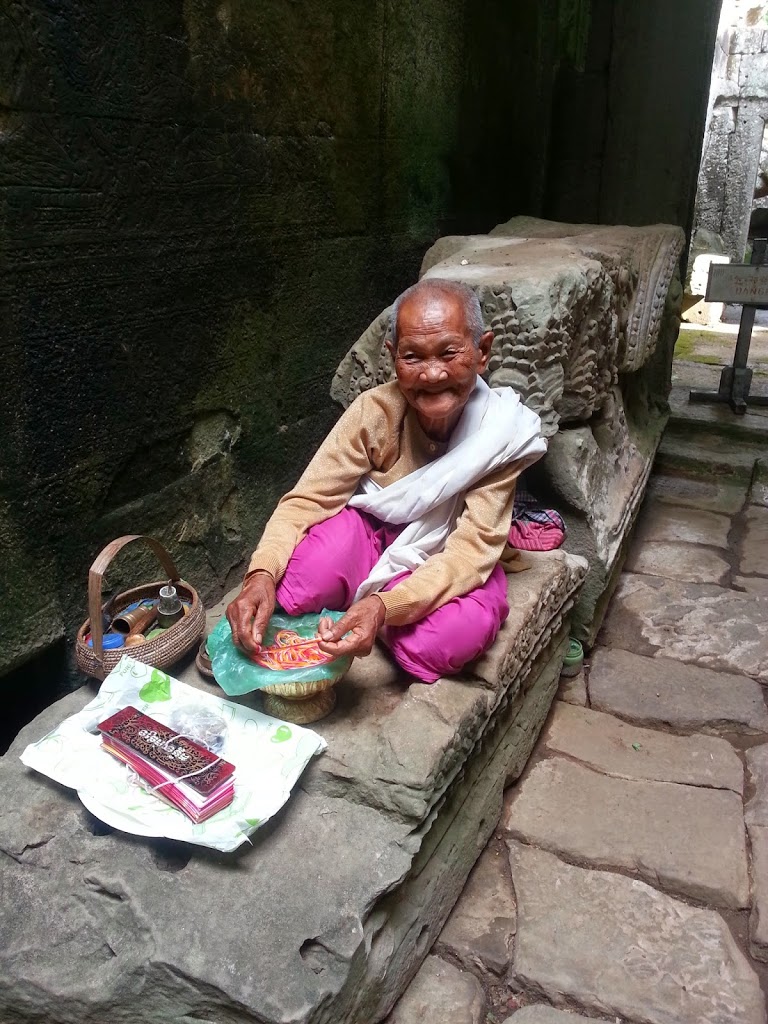
One of the highlights of our Preah Khan visit was meeting this sweet old lady who makes sacred thread bracelets and says a little prayer for those who come to her. She has become somewhat a celebrity already, as people who go to Preah Khan would approach her to take photos of her and with her. We did not get her name, but when I searched for her in Google, I found a lot of blogs and websites that featured her.
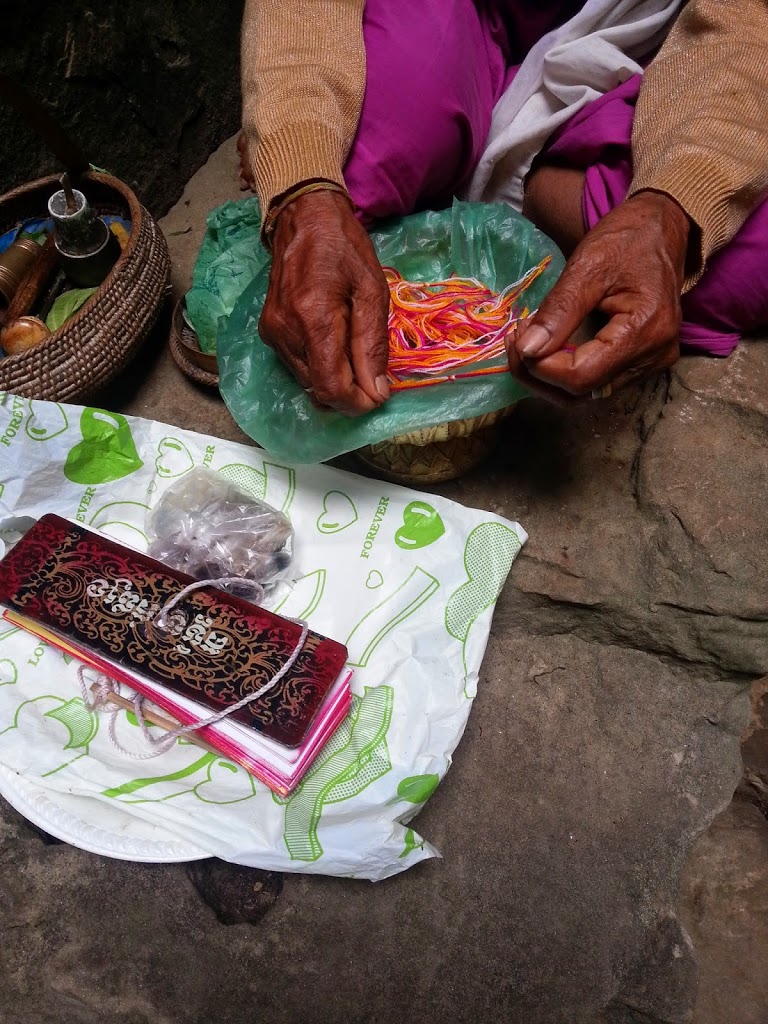 |
| She makes bracelets out of these yarns and blesses them. Those who wear these bracelet are advised not to take it off as it wards off bad energy and brings good luck. Whether you believe in those things or not, the fact that it was made by a kind and pious old lady is enough to make it a thing of beauty. |
 |
The kind old lady tied the yarn around my wrist and blessed me in a language I did not understand, but her gentle touch and sweet smile moved me in a way that was more powerful than words. After she finished her prayer, she put her hand in front of my forehead and made a swishing motion and uttered what sounded like a “woosh!” as if to drive away evil spirits. |
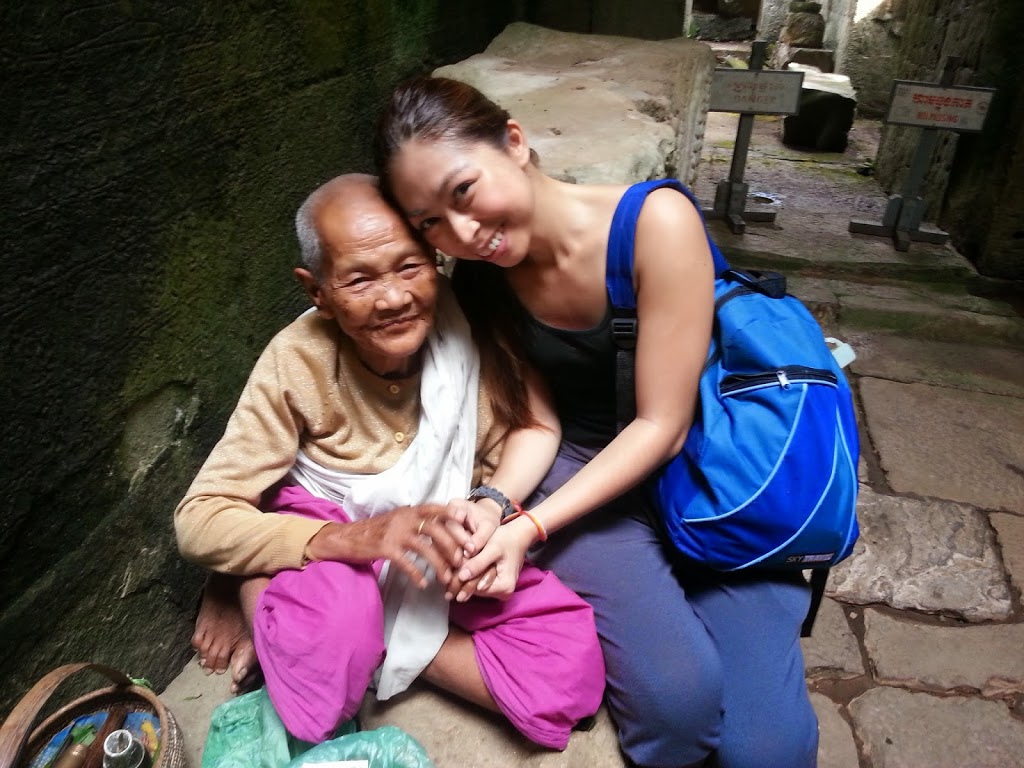 |
| Isn’t she the cutest?! She’s so small and cute! I wanted to bring her back home with me but I might get in trouble with customs! |
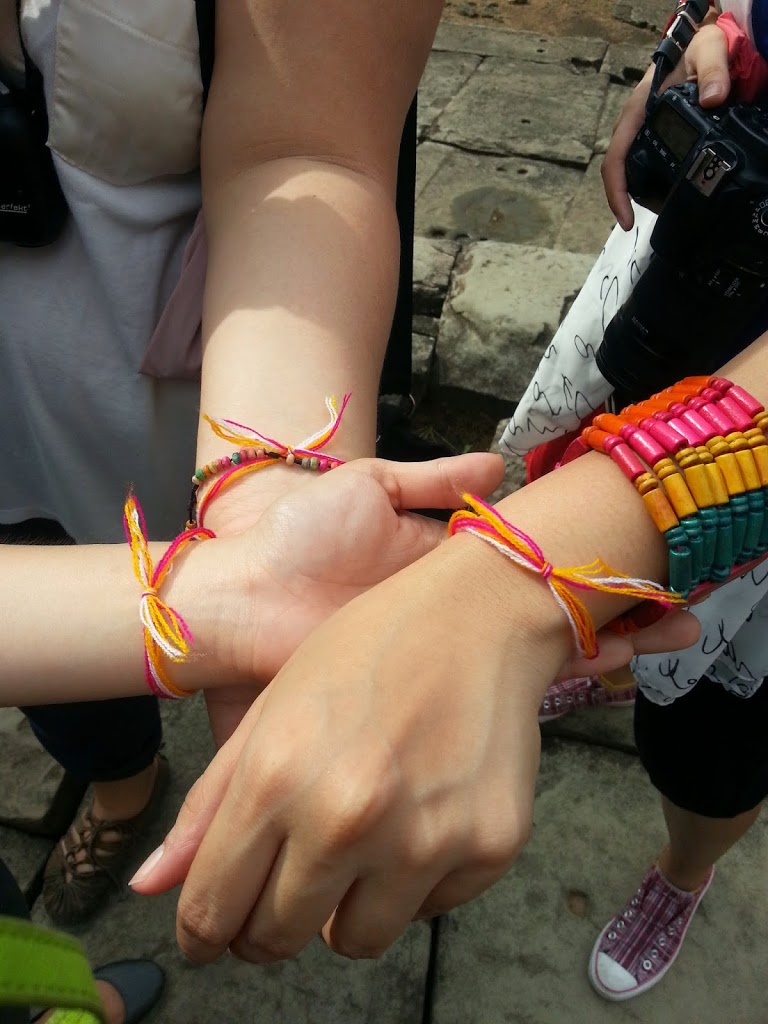 |
| This was definitely my favorite souvenir from Cambodia. I wore it for months and never took it off (even when I showered). Unfortunately, mine came off on its own and I couldn’t find it anymore. |
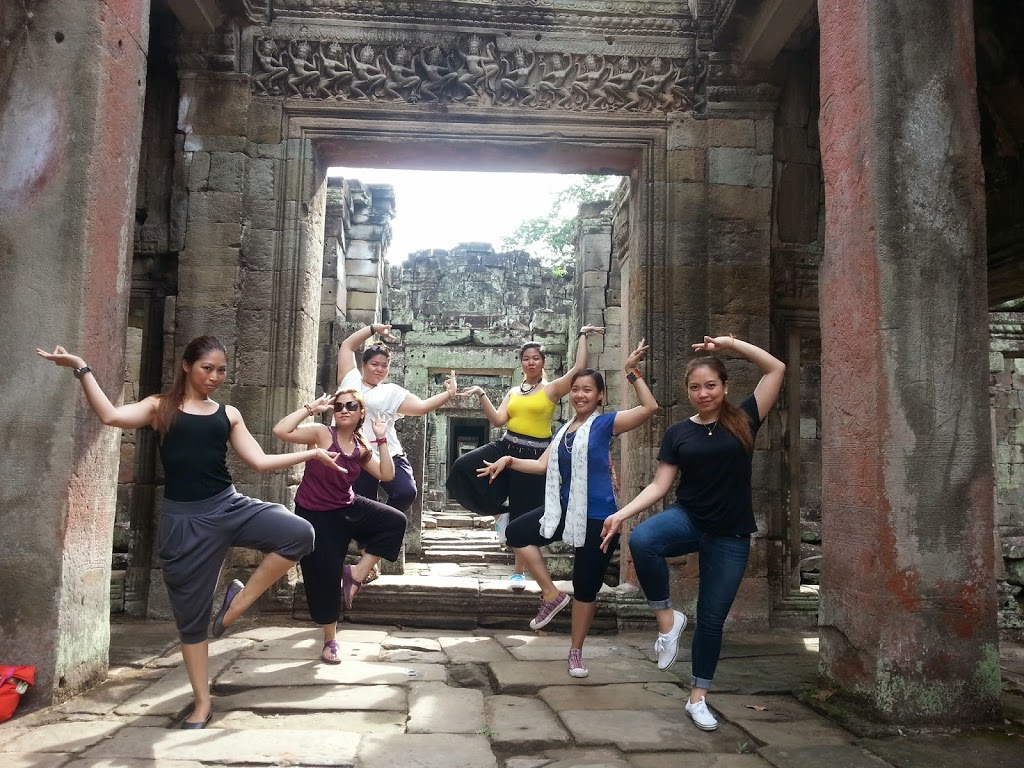 |
| Next, we entered the Hall of Dancers. As you can see, there are carvings of apsara dancers on the lintel above. Naturally, we had to re-enact the carvings. It looks like we were graceful prima ballerinas in this photo, but actually, keeping our balance wasn’t such a fluid feat. |
 |
| Cambodia is ♥. Spotted this little heart-shaped crevice on the ground. |
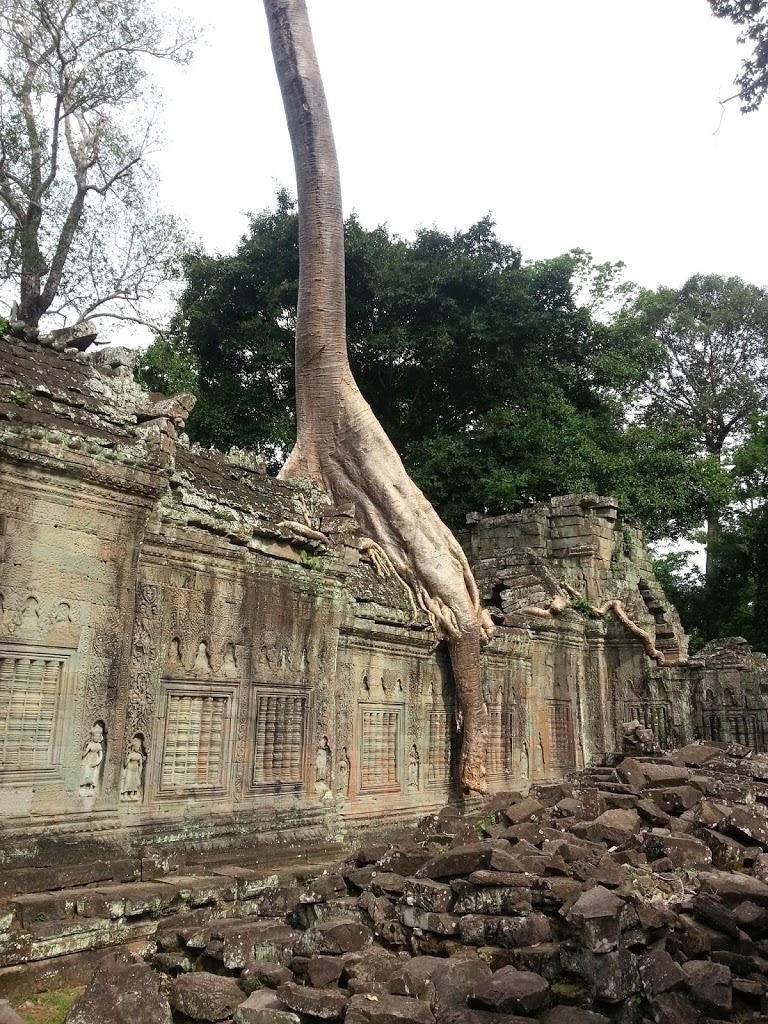 |
| Even in its state of disarray, Preah Khan manages to give an appearance of majesty and grace. |
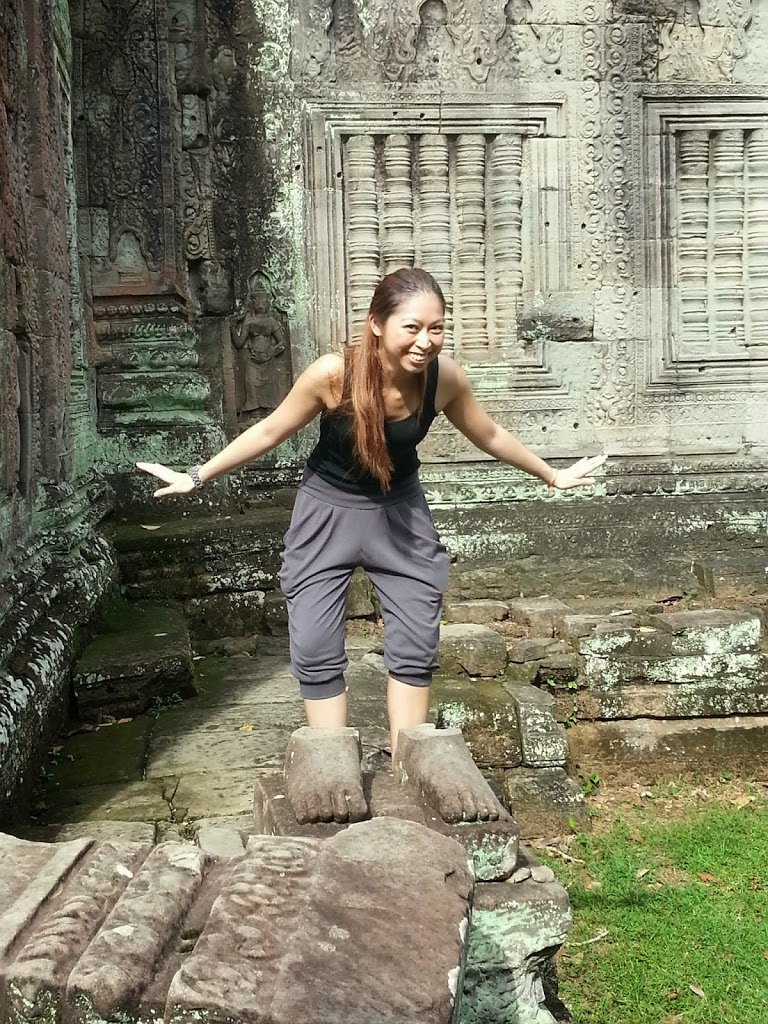 |
| Big Foot was here. |
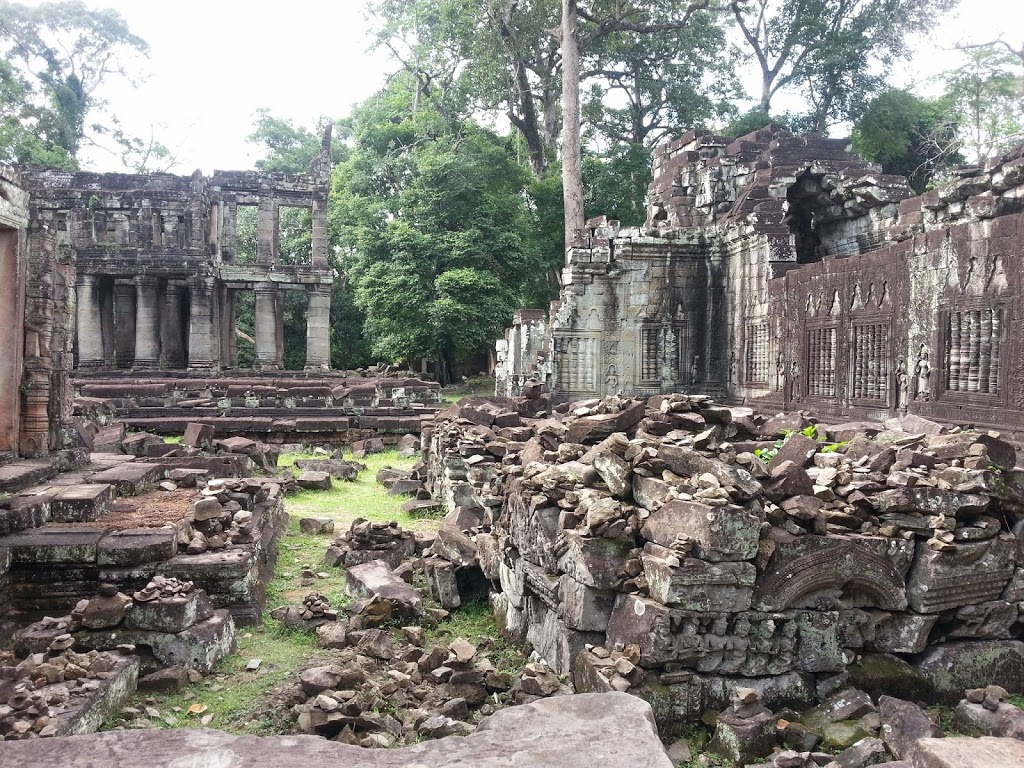 |
|
So much room for play! Try to zoom in the photo and see how many hidden human figures you can find.
|
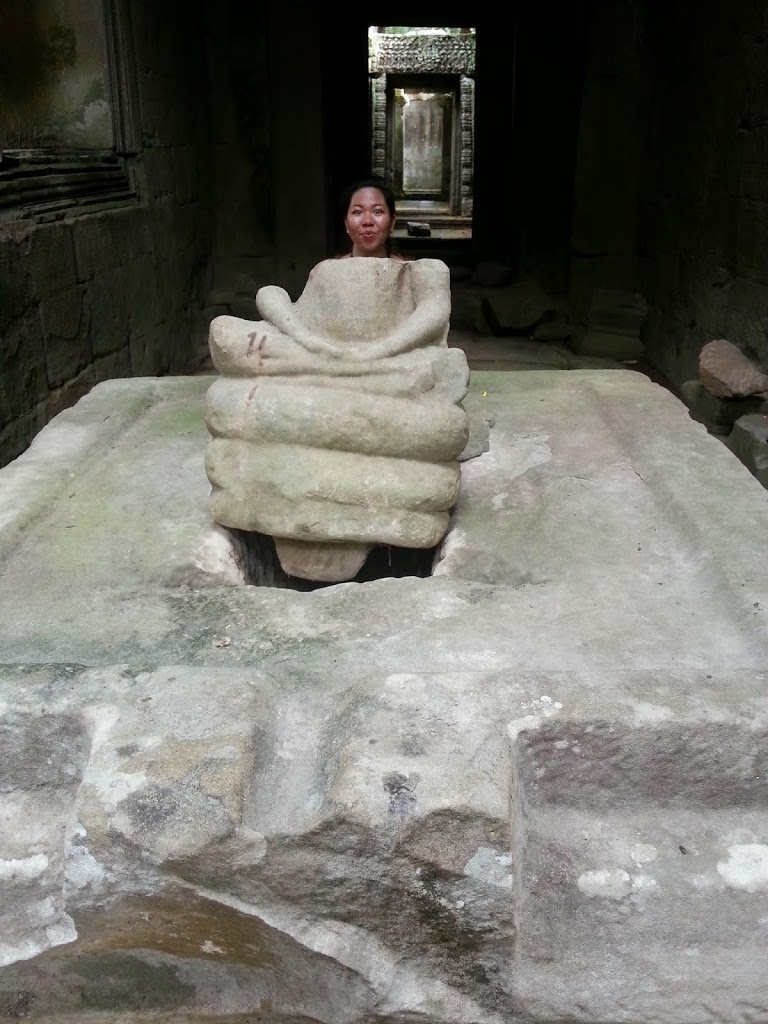 |
| Chin’s got a rockin’ bod… literally! Statues were beheaded when regimes have lost their sovereignty. |
 |
| Entering a door, and another door, and another door… Is this Inception? |
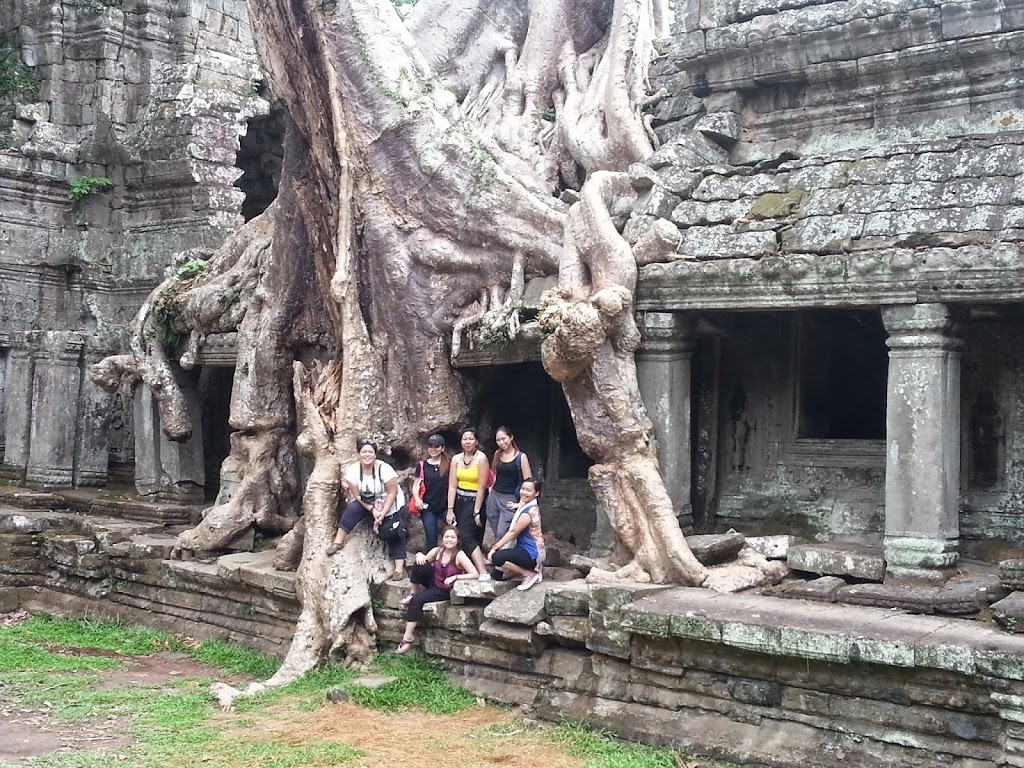 |
| That tree is a behemoth! Tell me that isn’t amazing! |
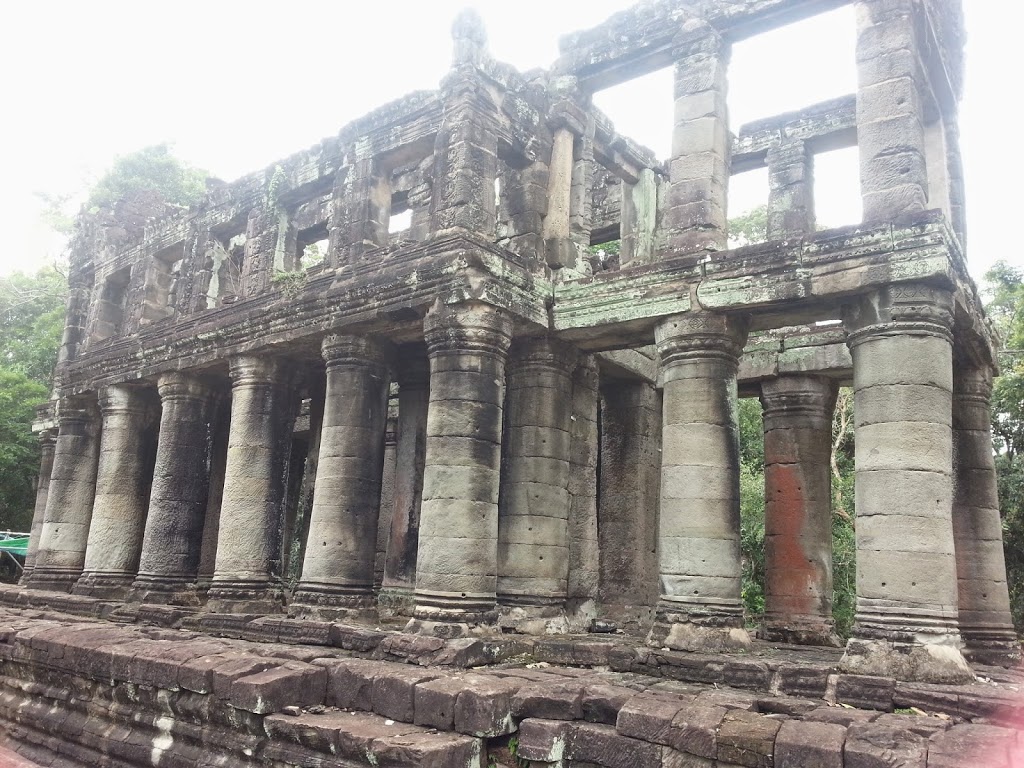 |
| A two-storey pavilion with cylindrical columns at Preah Khan shows the architectural mastery |
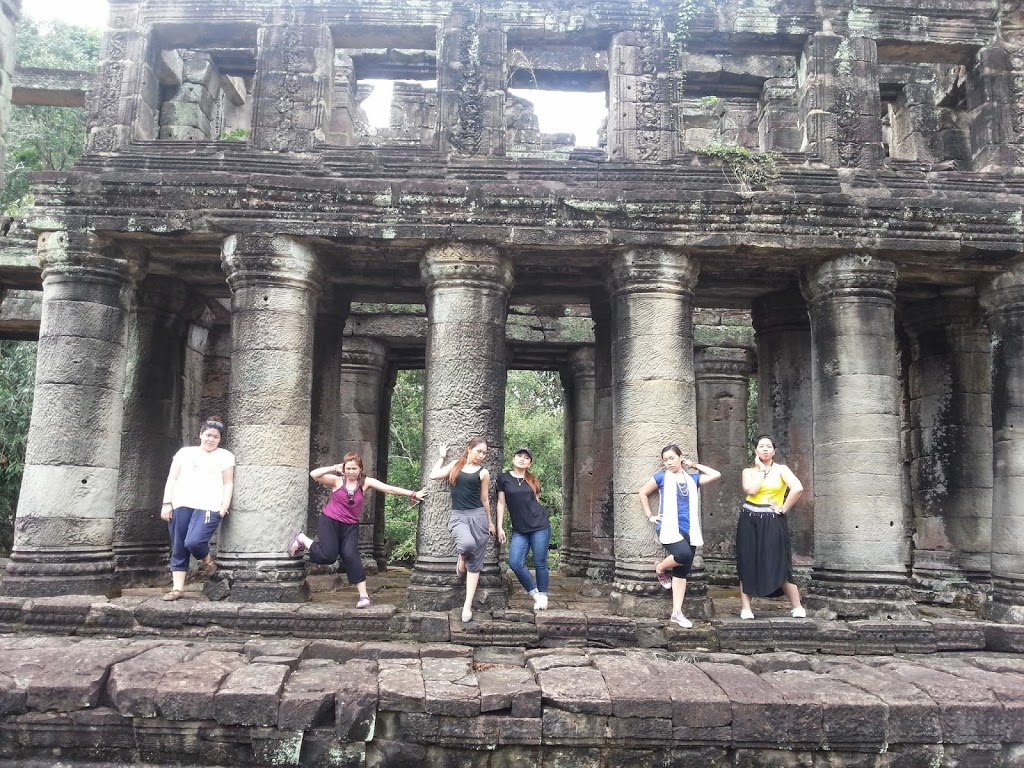 |
| Strike a pose! |
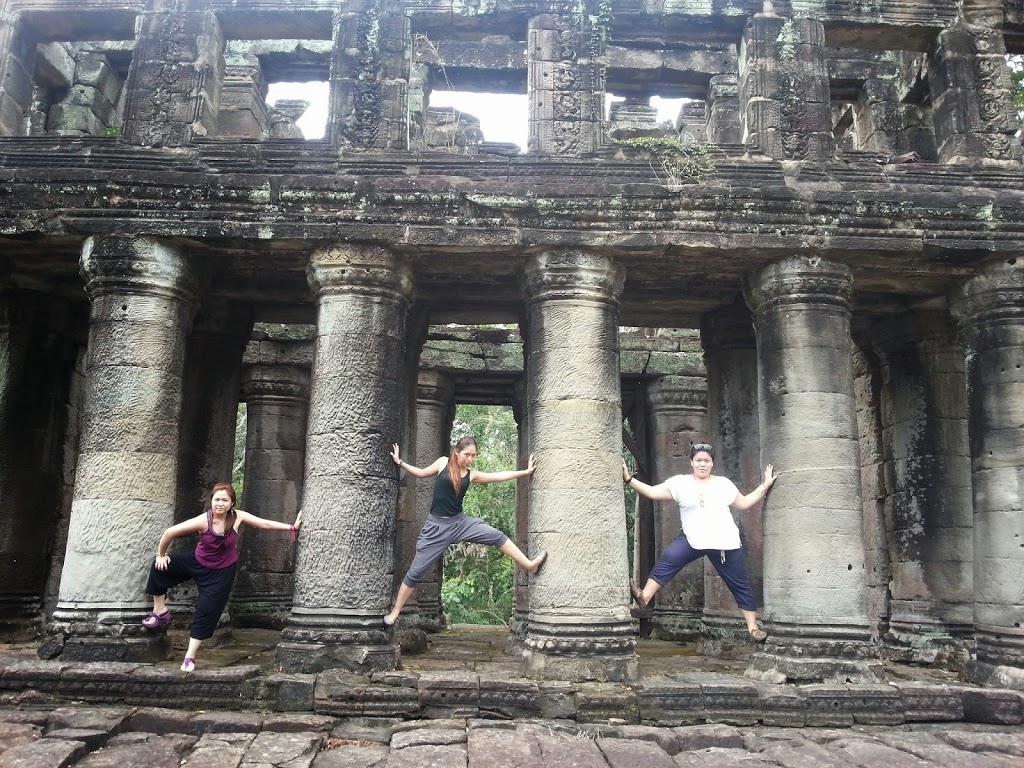 |
| We obviously had a lot of fun with these columns. |

Have you ever played the mobile game “Temple Run”? Since we were in a temple, we thought of re-enacting it. Alessa had to be the running explorer because this was, after all, her bachelorette party and she was going to get married. The rest of us played the role of the demonic monkeys. We all look convincing, don’t we?
 |
| I don’t know how they do it, but the Angkorians have a way of making the ruins look like an astonishing sight. |
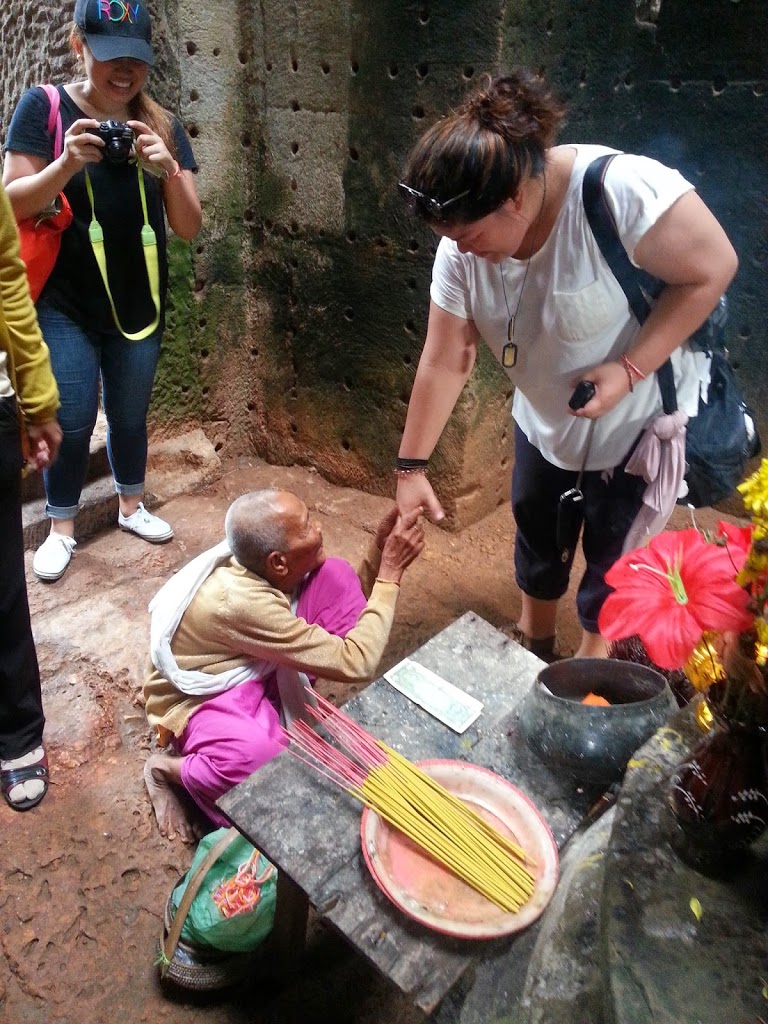
When we got to the center of the temple, we found the cute little old lady again! When we saw her for the second time, she was praying to a stupa. She was pretty happy to see us again… at least that’s what I think. I wouldn’t really know because she’s always so smiley. She really embodies the belief that the simplest people are the happiest!
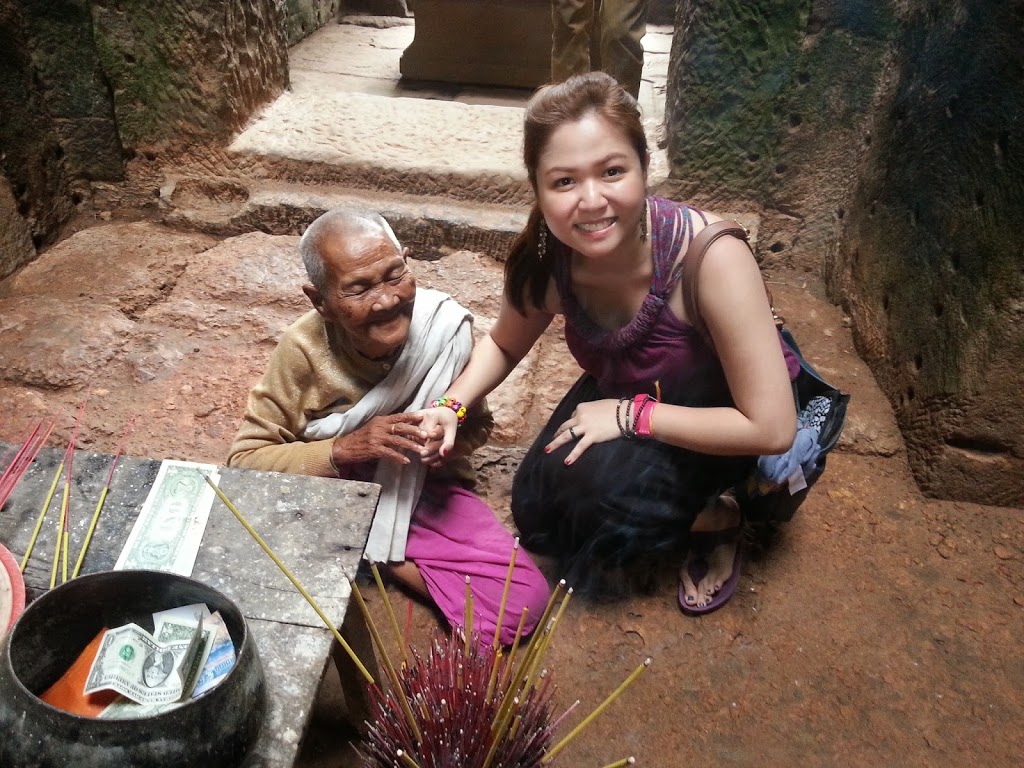 |
| The old lady blessed Alessa and prayed that she will have a happy and successful marriage. |
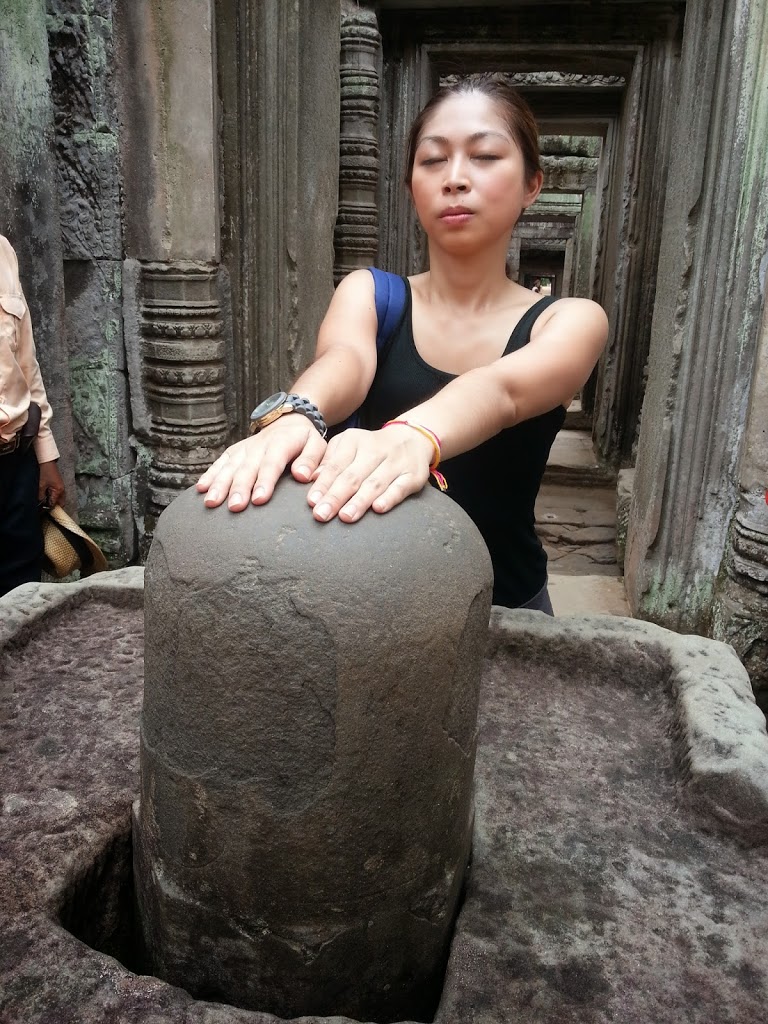 |
| This is a monument of a yoni (literally, a vagina) and linga (a representation of the male sexual organ). Together, the union of the yoni and linga symbolizes the power of fertility. Hmm… fertility, huh? Let me pray and worship this monument then! |
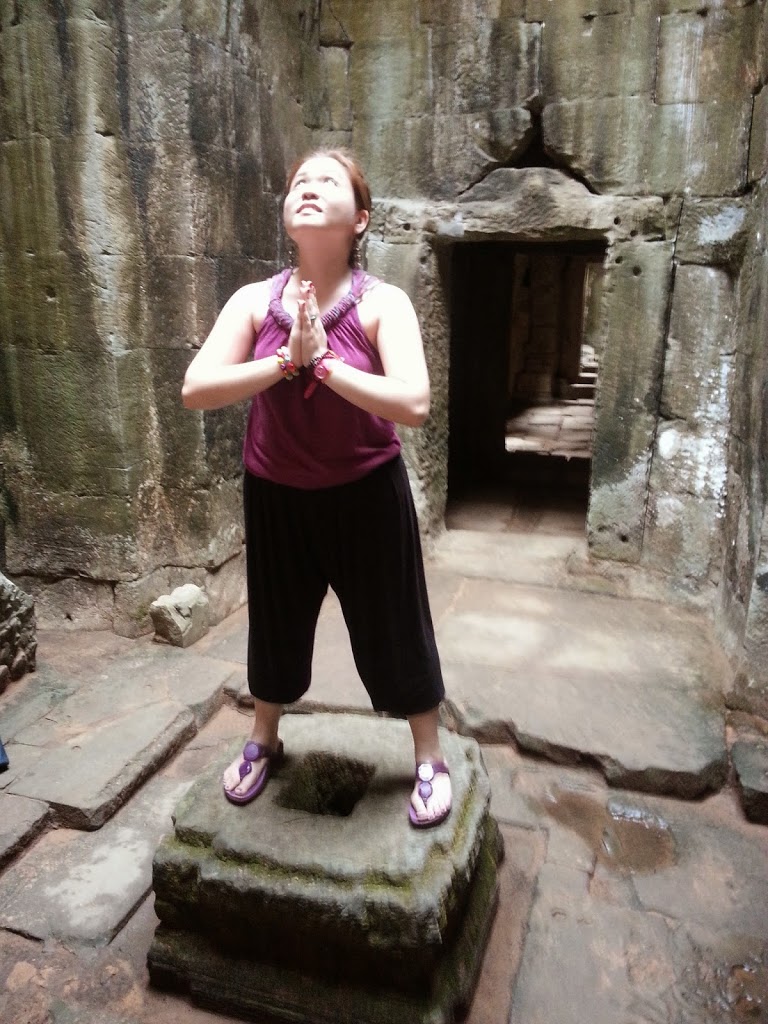 |
|
Alessa praying for a baby… someday, not now!
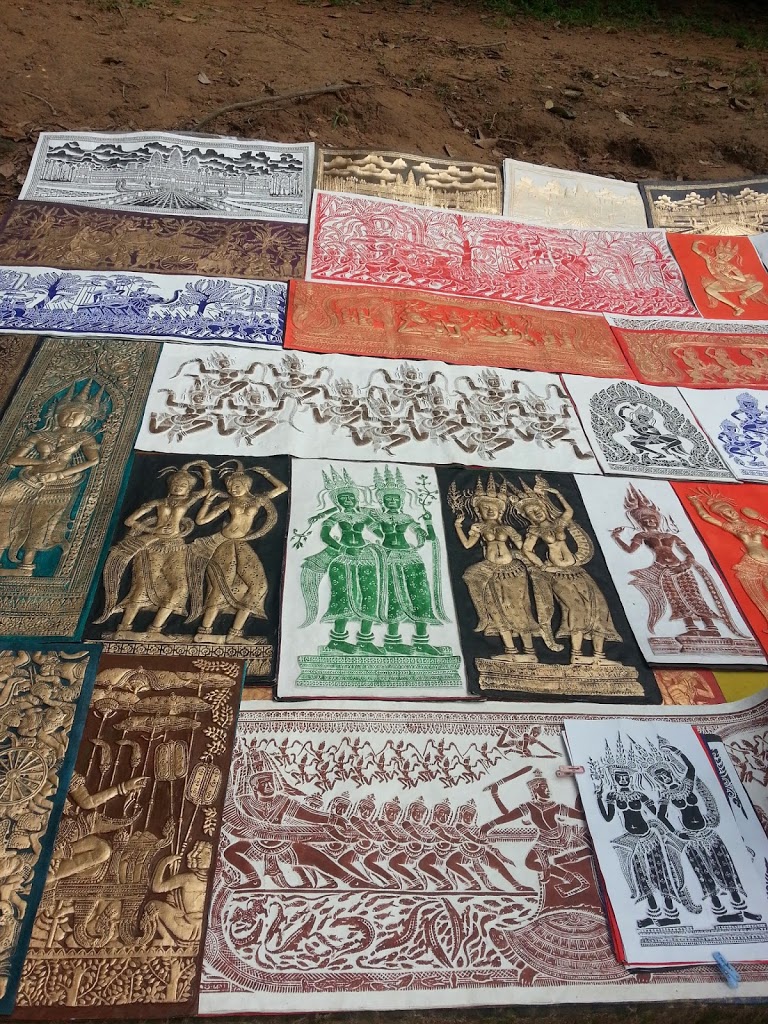 |
| Beautiful paintings and artworks of scenes from Hindu mythology |
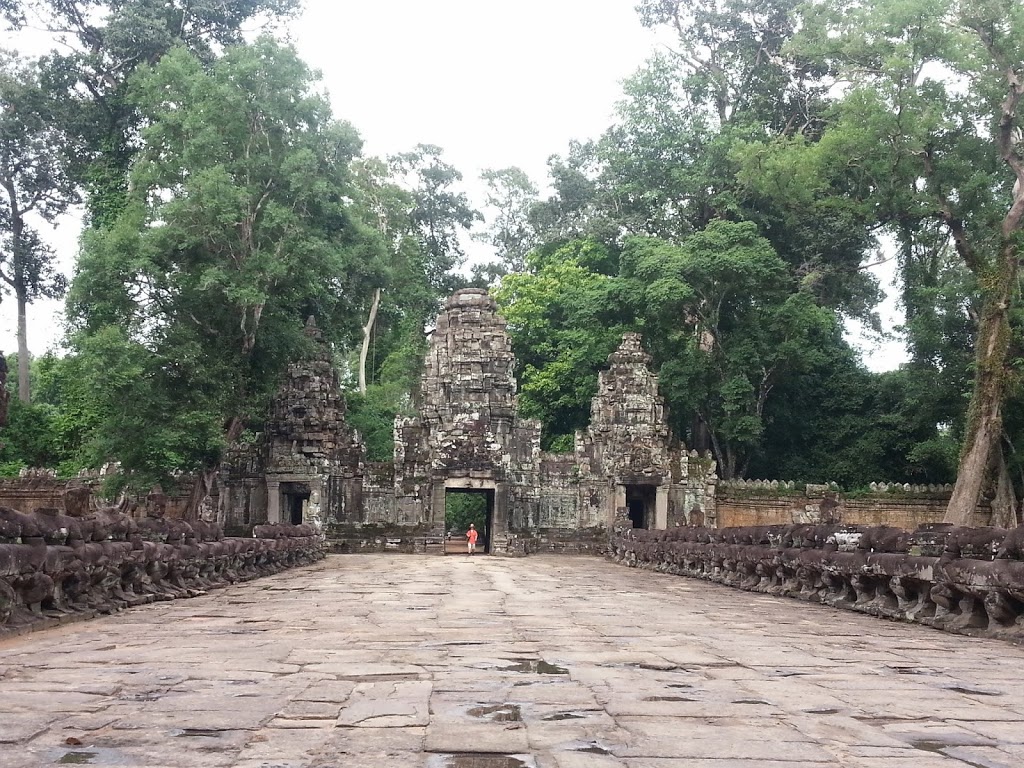
|
Crawling through dim and tight portals, climbing and descending mounds of rubble, being captivated by the sophisticated carvings, wandering the enchanting forest of tremendous trees and mesmerizing ruins — this temple was made for both frolic and fascination. There is simply just so much to do, discover, and delight in. After visiting all of the temples in our itinerary, we concluded that Preah Khan was definitely one of our favorite temples. To put it simply, we were charmed, and it was love.

Related

























































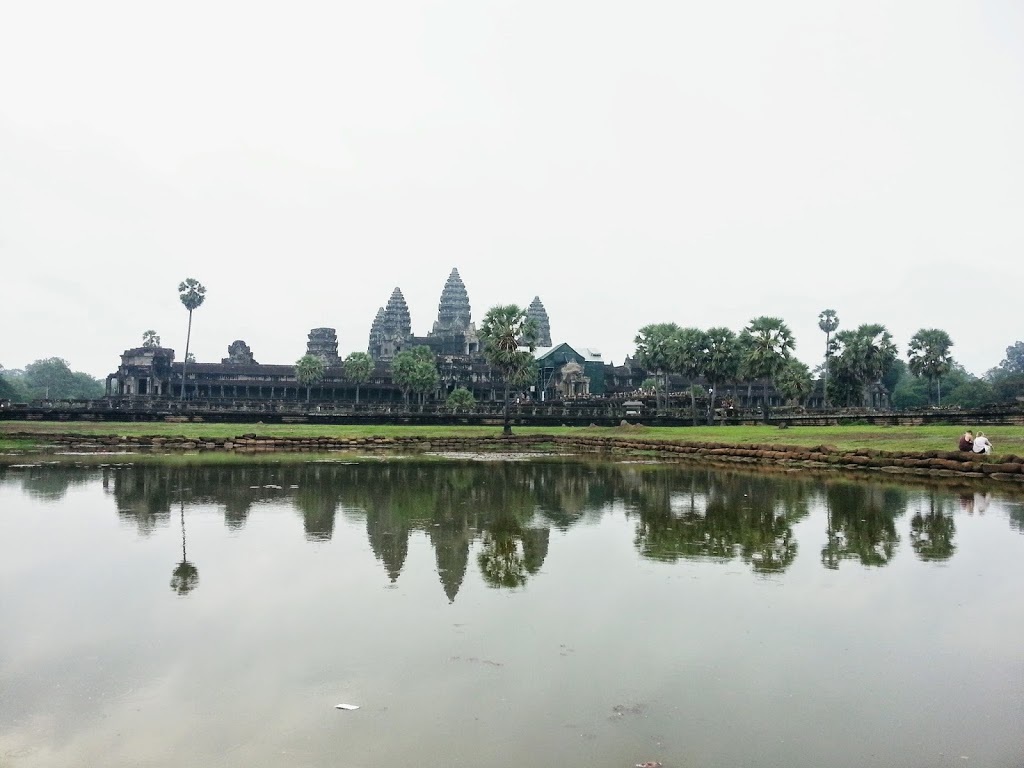
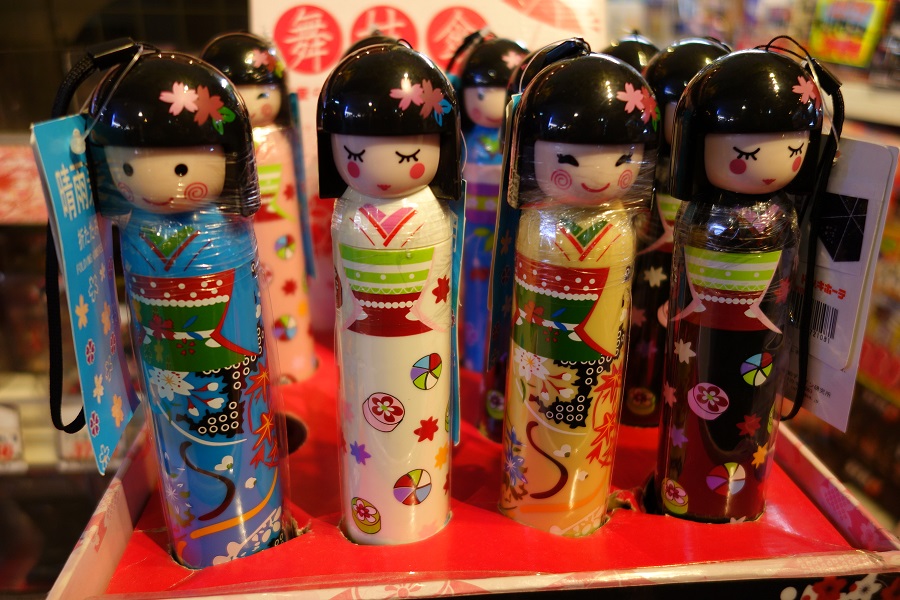
Hi NAdine, great post! I was just in Preah Khan today and also got myself blessed by the lovely old lady.
I was googling her around when found your post, so awesome! 🙂